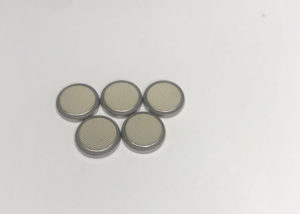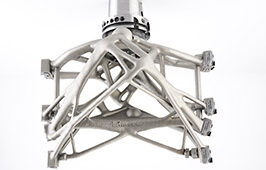
Lithium ion battery coin cells using the invention as the cathodes
The insatiable demand for portable power, from handheld electronics to electric vehicles, continues to drive materials innovations for Lithium-Ion Batteries (LIBs). Current inorganic cathodes in LIBs have peaked in performance, yet still suffer from low capacity and energy density, limited structural versatility, environmental pollution and safety risks which have created hurdles in the consumer marketplace. The introduction of Berkeley Lab’s metal-free Porous Graphitic Framework (PGF) for Sustainable High-Performance Li-Ion Batteries is a game-changer: it enables the commercialization of lightweight, sustainable, high-capacity and high-power-density LIBs. PGFs match or surpass the performance metrics of incumbent cathodes while using safer and more sustainable materials. Specifically, PGFs exhibit 4-fold enhanced capacity, an order of magnitude higher energy density, excellent cycling stability and improved conductivity compared to commercial cathodes. As a key differentiator, PGFs are prepared through an eco-conscious hydrothermal process with clear environmental benefits: its use obviates the need for toxic and expensive metals and organic solvents. These multifold advantages over conventional inorganic cathodes put PGFs in a unique position to amplify both the economic and environmental value of future battery technologies.





Tell Us What You Think!